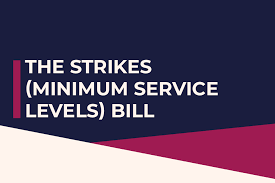Unemployment Benefits Law under Employment Law
Unemployment Benefits Law
(Under Employment Law)
1. What Are Unemployment Benefits?
Unemployment benefits are financial payments provided to eligible workers who have lost their jobs through no fault of their own. These benefits help provide temporary income support while individuals search for new employment.
2. Purpose of Unemployment Benefits:
To provide economic assistance during periods of involuntary unemployment.
To stabilize the economy by maintaining consumer spending.
To encourage reemployment through job search requirements and training programs.
3. Eligibility Requirements:
Eligibility rules vary by jurisdiction but typically include:
Involuntary Unemployment: The employee must be unemployed through no fault (e.g., layoffs, business closures).
Work History: Sufficient recent work history or “base period” earnings.
Availability and Capability: The individual must be able, available, and actively seeking work.
Registration: Some jurisdictions require registration with employment or workforce agencies.
Good Cause: Employees who quit or were fired may be eligible if they can prove “good cause” related to workplace issues (e.g., unsafe conditions).
4. How Benefits Are Calculated:
Based on a percentage of the claimant’s prior earnings (wages).
There are maximum and minimum weekly benefit amounts.
Duration is usually limited (e.g., 26 weeks in many U.S. states) but may be extended during economic downturns.
5. Funding of Unemployment Benefits:
Primarily funded through employer payroll taxes.
Some programs may have employee contributions.
Government agencies administer the program (e.g., State Workforce Agencies in the U.S.).
6. Claim Process:
Employees file a claim after losing their job.
Employers may be notified and can contest claims.
Claims are reviewed, and benefits awarded if eligibility is confirmed.
Recipients must regularly certify eligibility and report earnings.
7. Employee Rights:
Right to apply for benefits without discrimination.
Right to appeal denial of benefits.
Right to fair and timely processing of claims.
8. Employer Responsibilities:
Timely reporting of employee separations.
Payment of unemployment taxes.
Responding to claims and providing truthful information.
9. Recent Trends and Issues:
Expansion of benefits during emergencies (e.g., COVID-19 pandemic).
Increased focus on fraud prevention.
Integration with job training and reemployment services.









0 comments